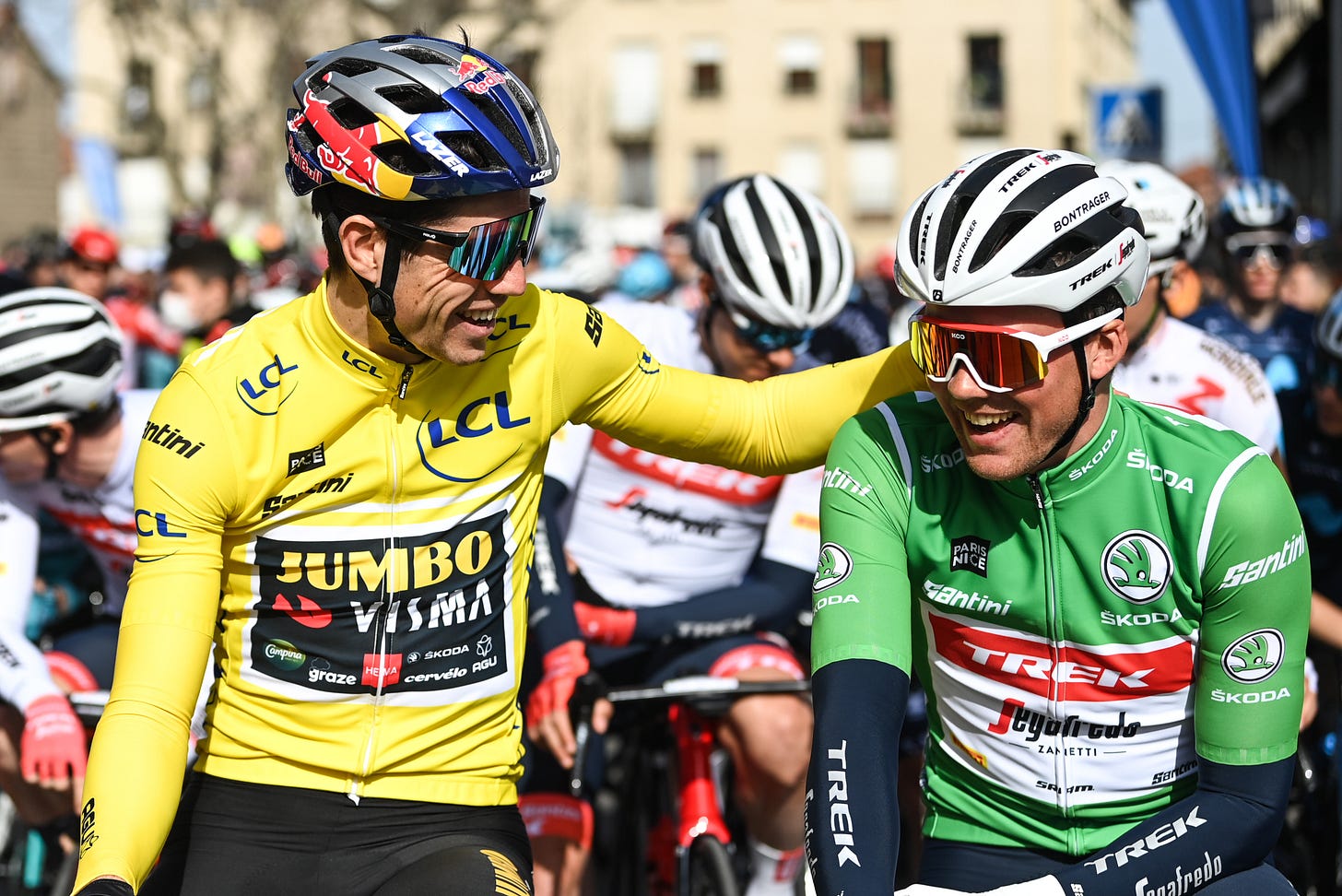The Crash that Decided Ronde van Vlaanderen
Wout goes down, Vollering goes out, and other news in advance of Holy Week
Winning a cycling race isn’t just about one day’s effort. When a monument or a grand tour or a world championship is on the line, one race determines an entire year’s worth of preparation. The variation on the racing calendar allows riders to pick and choose what they’ll concentrate on, but it also forces them to choose, for reasons of opportunity cost, what races they’ll sacrifice in order to achieve their ultimate goals.
For years, Wout van Aert has spread himself too thin. The man who can compete anywhere usually has. He’s cyclocrossed. He’s pounded out the cobbled classics, which ought to be his greatest strength. But he’s also been a contender at hilly classics and monuments. He’s gone to the Tour de France and tried to do four jobs at once—sprinter, time trialist, stage hunter, mountain domestique—and he’s come agonizingly close to world championship and Olympic gold, earning four silver medals between the two events but never standing atop the podium.
And that’s been the story so far, more or less: Almost. Van Aert got a late start on the tarmac, only shifting his focus primarily to road racing at age 24. He missed the second half of his first season at Jumbo-Visma after a horrific crash in a time trial at the Tour de France. And he’s had to spend the best years of his career getting ground into a fine paste by Mathieu van der Poel.
It’s outrageous that this rider has won Milan-San Remo, Strade Bianche, Amstel Gold, numerous other one-day races, and nine stages and the points classification at the Tour de France, and the prevailing opinion is that he should’ve won more. But that opinion is probably right. He’s that talented.
So van Aert refined his calendar this year with the goal of winning at least one of the three races that could validate his career—the Tour of Flanders, Paris-Roubaix, or the Olympic road race—before he turns 30 in September. No Tour de France, no Milan-San Remo, no Strade Bianche, no fucking around, all killer, no filler.
The classics season got off to a good start: third at Omloop amidst a multifaceted team attack. First at Kuurne-Brussels-Kuurne. Third at E3, as a late spill cost him a shot at hanging with van der Poel, but no big deal. We go again.
But with 67 kilometers to go in Dwars door Vlaanderen, van Aert got the worst of a horrific crash that took out half a dozen key riders: Mads Pedersen hit the deck, as did his Lidl-Trek teammates Alex Kirsch and Jasper Stuyven. Biniam Girmay went down as well. Girmay and Pedersen are still slated to race the Tour of Flanders on Sunday, but Stuyven broke his collarbone.
It was van Aert who got the worst of it. It looked like whatever gremlin led to this horrendous chain reaction—a pothole, an accidental touching of wheels, an unexpected gust of wind—reached up and bit van Aert first. And when the dust settled, he was sitting in the middle of the street, jersey torn open to the middle of his back, wearing a visible layer of asphalt on his exposed skin.
Van Aert suffered fractures to his collarbone, sternum, and ribs. Obviously, that rules out Ronde van Vlaanderen and Paris-Roubaix. The real shocker is that Visma-Lease a Bike hasn’t ruled him out for the Giro d’Italia, which starts in only five weeks.
Eight years ago I used a story from cycling to explain the horrors of the season-altering or season-ending injury in baseball. Everything you’ve worked for goes up in an instant, in one crash, one collision, or in that case, one bad pitch in which your elbow ligaments wrench the bones in your arm apart.
This time it’s going to be different, van Aert thought after five years of getting most of the way to winning a cobbled monument. And this time it was different. It’s worse.





